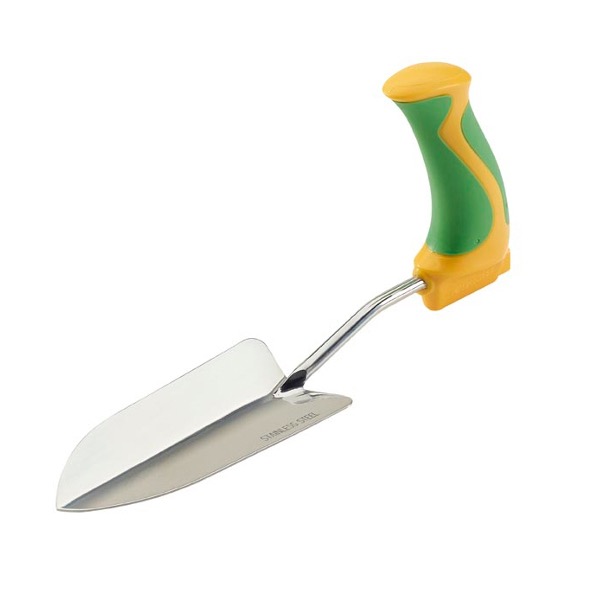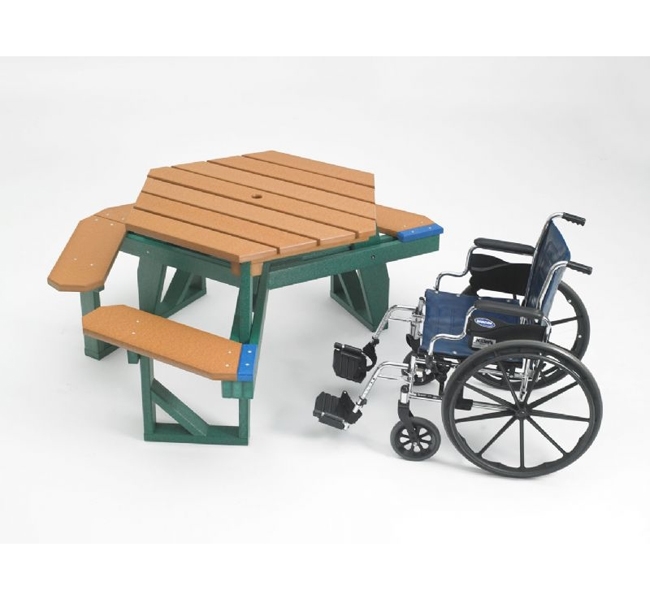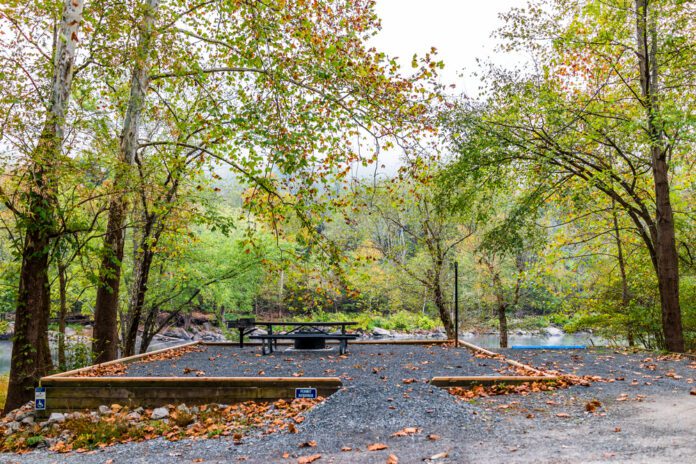Countless studies have concluded that nature is good for one’s overall health. According to the American Society of Landscape Architects, time spent outdoors enhances self-esteem and mood, improves cognitive function and memory-related abilities, and increases attention spans among children with autism spectrum disorder, to name a few of the many known benefits. Health advantages aplenty await just outside your door and on your own property! A backyard or outdoor living space is an extension of your home, so why not maximize its functionality?
First, think about what design elements will enrich your outdoor space for you and your loved ones. Accessible layouts can benefit all, from trike-riding kiddos to wheelchair-users and everyone in-between. Consider designating sections for eating, recreation and relaxation. Those with green thumbs may brave DIY remodeling projects but don’t hesitate to consult professionals too. Landscape architects may suggest innovative ideas that’ll transform your outdoors beyond your wildest dreams!
Walkways
Accessible paths are essential. Concrete is the best bet to achieve a smooth, level and consistent surface. However, don’t assume that you’re limited to a plain grayish sidewalk look. Patterns can be etched in and colors can be added too. For occasional pops of hues, use decorative tiles (with a slip-proof coating). Wood walkways work as well, but be sure to finish with a proper sealant. Gravel, mulch and stone are less ideal material choices. For natural pathways made of grass or dirt, remove tripping hazards (tree roots, overgrown shrubbery, etc.).
Some professionals suggest staggering spaces and adding areas of elevation for visual interest. For a multi-tiered layout like this, maintain accessibility by using ramps and small bridges. Strive to meet ADA width recommendations of 36”or greater.
Seating
Plan for ample space in the seating area. For dining ease, select a table with removable chairs so, if applicable, wheelchairs fit comfortably. Or, opt for an accessible table specifically designed with wheelchair users in mind. Several online retailers sell these accessible outdoor products and more, such as FifthRoom.com, FurnitureLeisure.com, Belson.com, InclusiveFurniture.com and NationalOutdoorFurniture.com.
Pool
A swimming pool can be a beautiful focal point; and there are numerous ways to enhance accessibility. For example, zero entry pools, also known as beach entry, allow for a gradual elevation transition and, thus, eliminate the need for stairs altogether. Another option, requiring a minimal number of stairs, is a sun shelf which has a large in-water platform (or stair). This provides a great spot to sunbathe and relax in the water. And, of course, stair entries should include a handrail.
There are several types of pool lifts, such as a canvas sling seat or chair seat.They are manually-operated, battery-operated or motorized, raising an individual from the pool deck and lowering him/her into the water (and the reverse to exit).
Irrigation
Gone are the days of simple sprinklers that have to be manually moved to water grass. Once your landscape design is complete, invest in a proper irrigation system to hydrate the yard and plants. Just set the sprinkler system timer! Be sure to account for proper drainage, incorporating roof run-off to avoid any pooling or flooding.
Gardening
Research suggests that gardening reduces stress and depression symptoms, while boosting muscle strength, mental clarity and a sense of accomplishment. Plus, food gardeners who increase consumption of fresh fruits and vegetables can reap the added benefits of a decreased waistline and lowered risk of cardiovascular disease and cancer. Studies have also found that patients with views of trees from their hospital rooms have shorter post-operative stays and use less medication compared to those without natural views. That’s why, according to the National Garden Bureau, healing gardens are sprouting up in a variety of facilities, like substance abuse treatment centers, outpatient clinics, long-term care facilities, hospices and retirement homes.
“Our mission is to enable every individual with a physical disability or limitation to enjoy the mental, physical, social and spiritual benefits of gardening.” – Raymond LaRocque
In 2008, Raymond LaRocque was ready to pursue gardening and he wasn’t going to let his autoimmune-related spinal cord injury interfere with his retirement pastime plans. He founded Accessible Gardens, a Rhode Island based company producing versatile and affordable raised garden beds for customers who have physical limitations. “Our mission is to enable every individual with a physical disability or limitation to enjoy the mental, physical, social and spiritual benefits of gardening,” LaRocque told AmeriDisability Services of the widespread client base, from children to seniors with minor mobility restrictions to paralysis. As for tools, AmeriDisability Services stumbled across Manage At Home, an online retailer with products that aid independent daily living, including gardening gear such as the Easi-Grip Garden Fork (which limits wrist/hand strain), Folding Garden Kneeler (designed for comfortable kneeling and/or sitting with support rails) and more.
The National Garden Bureau suggests growing plants that you find pleasing. For example, do you feel energized by bright colors or calmed by certain scents? If you want to harvest food, plant the produce and herbs that you enjoy or cook with most. Ask your landscape architect or local gardening shop to suggest plants that pollenate to attract butterflies, bees and other beautiful insects. Be sure to position a chair or bench beside your garden to appreciate its beauty even when not actively gardening. And, if desired, pepper in inspiring focal points, like sculptures.
Soothing Elements & Other Considerations
There are many ways to integrate soothing sounds, like with a water fountain, wind chimes or bird feeders that invite chirping birds and curious wildlife. Some other pieces to consider: a fireplace, koi pond, lawn ornaments, lanterns, etc.
Decide which sections require shade versus direct and/or partial sunlight. While trees can provide natural coverage, a large umbrella is an easy addition. Structures like pergolas and gazebos are great too.
Home cooks and serious foodies have helped make outdoor kitchens popular. As with an indoor kitchen, exterior spaces can be customized with countertop height, a roll under space, touch faucets and other modifications. Consider a pass-through window to easily transition food and serving items from the inside out; or, simply position the exterior kitchen in close proximity to your entryway.
Situate ample lighting throughout with ground fixtures, lamps, strung twinkles and so on. Gate locks, latches and doorknobs can be repositioned to any height. If you care for a loved one who could wander off property, such as a person with dementia, add a deadbolt for extra security.
What do you love about your own outdoor living space? Share with us online and via Facebook!
Photo credit below left: Furniture Leisure
Photo credit below right: Manage A Home








